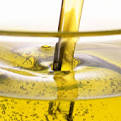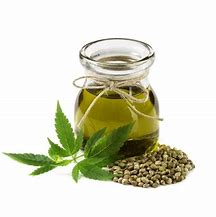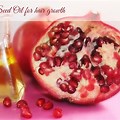Wheatgerm Oil - Triticum vulgare, T. durum, T. aestivum-2







Wheatgerm Oil - Triticum vulgare, T. durum, T. aestivum-2
Physical Properties: Specific gravity 0.920
Vitamins
The oil contains vitamins A, B1, B2, B3, B6, E (levels of 3500 ppm compared to 250-600 ppm in other oils) and F.
Mineral Content: A, C1, Co, Cu, Fe. K, Mg, Mn, Na, S, Si, Zn.
Therapeutic proteries - Internal Use
In growing children, the oil helps to maintain healthy spines, bones and muscles. It can also be taken to help prevent eczema, indigestion and the development of varicose veins and is said to be anticoagulant.
Wheatgerm oil has antioxidant properties due to the high tocopherol content and helps to remove cholesterol deposits from the arteries and is a useful food oil in the battle against low density lipoprotein; the pharmaceutical industry uses the antioxidant properties of tocopherols, often in a synergy with ascorbic acid (Bruneton 1995).
The use of vitamin E in cardiovascular disorders has been reviewed by Kleijnen et al (1989).
Therapeutic Properties - Internal Use
- rich in lipid soluble vitamins therefore very good for revitalizing dry skin (Sanecki 1987)
- believed to help relieve symptoms of dermatitis
- beneficial for tired muscles, making a good base for after sport massage.
-
Cosmetic Use
It is useful on ageing skin (Sanecki 1987) where its natural antioxidants are an effective weapon in the war against free radicals, softening the skin and making it more supple because of its cell regenerative properties ( Battaglia 1995).
Culinary Use
The high price of wheatgerm oil means it is little used in culinary applications.
Cautionary Notes
Those allergic to wheat flour should be tested for possible skin reaction before use in aromatherapy or massage. Regular use on the face may encourage hair growth in those susceptible to it. It is non-irritant on the skin of babies (Stier 1990).
Reference: Carrier Oils For Aromatherapy & Massage: len Price with Ian Smith & Shirley Price
Articles-Most Read
- Home
- Contact Us
- Coconut Oil-2
- Absorption Ratings for Carrier Oils
- Cold Pressing Method
- What are Essential Fatty Acids
- Cherry Kernel Oil
- Fixed Oils and Skin Penetration
- Hempseed Oil
- Almond Oil
- Cocoa butter
- Camelina Oil
- Coconut Oil
- Antibacterial Effects Of Carrier Oil
- Lime Blossom Oil (macerated)
- Carrot Oil, Wild Carrot Oil (macerated)
- Apricot Kernel Oil
- Kukui Nut Oil
- Jojoba Wax
- Pumkin Seed Oil - Cucurbita maxima, C. pepo
- Passion Flower OIl (Macerated)
- Hydrocotyle Oil (macerated)
- Palm Kernel Oil
- Rapeseed Oil - Carrier Oil
- Nutrients
Who's On Line
We have 120 guests and no members online
Articles-Latest
- How to Make Homemade Olive Oil: A Step-by-Step Guide
- 20 Evidence-Based Aloe Vera Oil Benefits For Skin, Hair & Health
- Peanut oil - Cold pressed - Are There Health Benefits? How To Make
- What Are the Health Benefits of Black Seed Oil?
- Comfrey oil Infused
- Chamomile Flowers Infused Oil
- Calendula Flowers Infused Oil
- Arnica Flowers Infused Oil
- How To Make Herb-Infused Oils
- DIY avocado oil for healthy skin
- How To Make Coconut Oil
- 8 Benefits of Mustard Oil, Plus How to Use It
- SHOREA STENOPTERA SEED BUTTER
- Shea Butter- 7 Amazing Benefits Of Shea Butter
- Monoi Oil For Hair & Skin
- Mango Seed Oil
- Cohune Oil Is The Next Big Thing
- Brazil Nut OIl
- 7 Impressive Benefits Of Allspice
- Camelina Oil Benefits, Uses, and Side Effects




